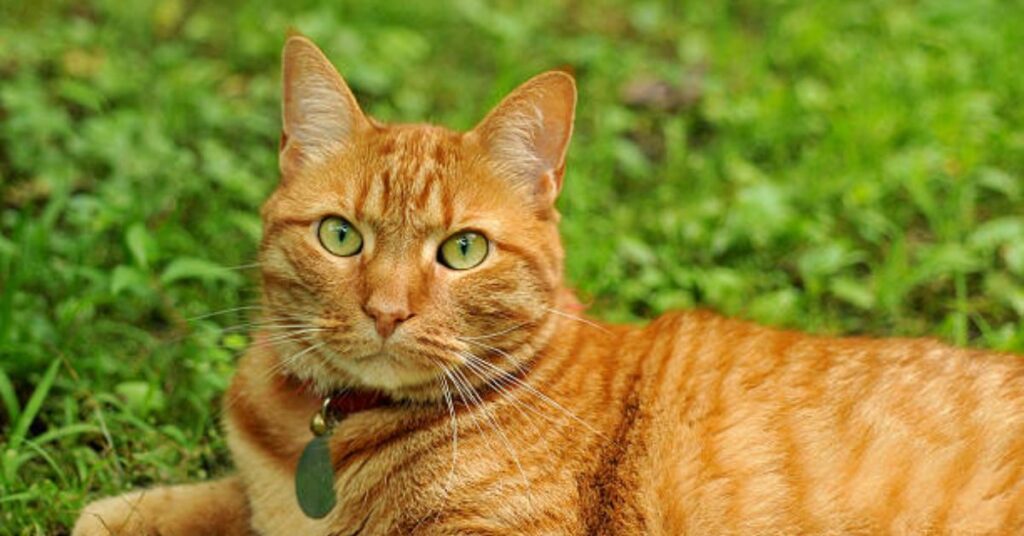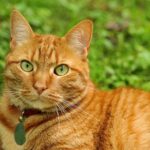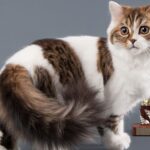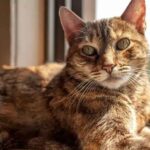Have you ever been captivated by the brilliant, vibrant orange fur of a tabby cat? Their radiant coats are truly eye-catching!
Let’s dive into the world of these marvelous “marmalade” felines and uncover some fascinating facts about orange tabbies that will make you appreciate them even more.
What Exactly Are Orange Tabbies?
The term “orange tabby” refers to the distinct coat pattern and coloring of these cats, not a specific breed. Their striking orange or reddish fur results from the phaeomelanin (red pigment) entirely replacing the typical eumelanin (black or brown pigment).
The word “tabby” itself originates from the French word “tabis” meaning a rich, watered silk fabric. This pattern’s resemblance to the wavy lines in silk eventually led to its association with certain coat markings in cats.
Orange Tabbies Are Not a Specific Cat Breed
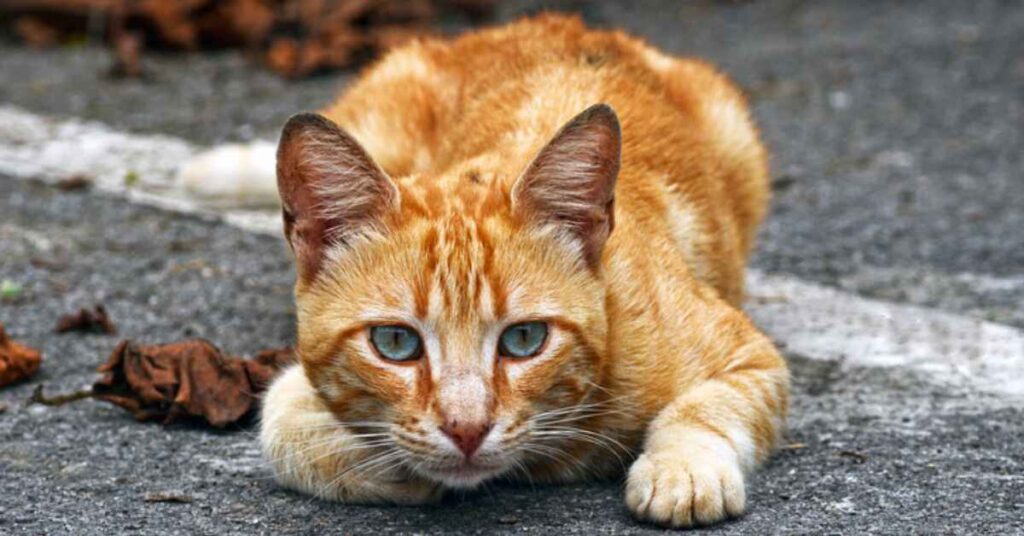
It’s a common misconception, but tabbies are not an actual breed. Rather, the term describes a coat pattern that can occur across numerous cat breeds, such as:
- Maine Coons
- Persians
- American Shorthairs
- British Shorthairs
And many more! So while their coats may look similar, orange tabbies can have diverse breed backgrounds and traits.
No Such Thing As a Solid Orange Cat
Every single orange cat exhibits those distinctive tabby markings we’ve come to recognize – the trademark “M” on the forehead, stripes around the eyes and face, streaks along the back and legs, and bands around the tail. All orange cats are, by definition, tabbies.
Recommended Post:
What Causes That Diluted, Creamy Orange Shade?
While many orange tabbies showcase a deep, vibrant ginger hue, others have a paler, creamy or buff colored coat. This softer shade results from the “dilute” gene, which acts sort of like adding a bit of white paint to a brighter color – muting and lightening the pigment.
Think of it like the difference between a bold red-orange and a more subtle peach tone. These lighter “cream” or “buff” tabbies inherit the dilute gene from both parents, whereas their deeper orange siblings lack that gene or only got it from one parent.
Fun Fact: Just like humans can have different hair colors in the same family, you may see an orange and a cream tabby littermate!
Video Illustration: The Distinct Orange Tabby Patterns
All tabbies, including our orange friends, can exhibit one of four basic coat patterns:
- Classic Tabby: Defined by swirling patterns across the body and sides.
- Mackerel Tabby: Narrow, parallel stripes running along the sides (tiger-like).
- Spotted Tabby: A blend of spots and broken stripes all over.
- Ticked Tabby: Lighter roots giving an “agouti” salt-and-pepper appearance.
To visualize these patterns, check out this helpful video:
The Fascinating Science Behind Male Orange Tabbies
Have you noticed that most orange tabbies seem to be male? There’s an interesting genetic reason behind this!
The “O” ginger gene that produces orange fur is located on the X chromosome. Since males only have one X chromosome, they only need one copy of the O gene to exhibit the orange coat color.
But females, with two X chromosomes, require two copies of O to be orange (one from each parent). If they only inherit one O gene, they become tortoiseshell or calico patterned instead.
| Genetic Makeup | Coat Color |
| OO | Orange |
| Oo | Tortoiseshell/Calico |
| oo | Black, Brown, etc. |
Around 80% of orange tabbies are male due to this genetic quirk – though orange females definitely exist too!
The Great Debate – Are Ginger Cats Friendlier?
There’s a popular notion that orange tabby cats tend to be more affectionate, sociable companions compared to other felines. But is there any truth to this?
Some research suggests male cats may be slightly more cuddly overall. And since most orange tabbies are male, this could contribute to the perception.
However, many cat owners of all coat colors will gladly share examples of both incredibly friendly and decidedly aloof felines in their household. At the end of the day, a cat’s personality is as unique as their fur pattern!
“While some people believe orange tabbies make better lap cats, I’ve had Siamese, calicos, and tabbies with all sorts of temperaments over the years.”
– Pet Owner Testimony
What’s your experience been with the behavior of ginger cats? Do you agree or disagree with this reputation? Share your stories in the comments!
Spots and Freckles – What Pet Owners Should Know
As orange tabbies age, you may notice them developing dark spots or freckle-like markings on areas like the face, lips, nose and paws. Before worrying, know that this is a harmless genetic condition called lentigo.
Caused by an increased concentration of epidermal melanocytes (the cells that produce pigment), lentigo happens more commonly in orange cats due to their increased expression of red/yellow pigment.
While generally benign, it’s still wise to have your vet examine any new spots or changes, just to be safe. Here’s an example of what lentigo looks like:
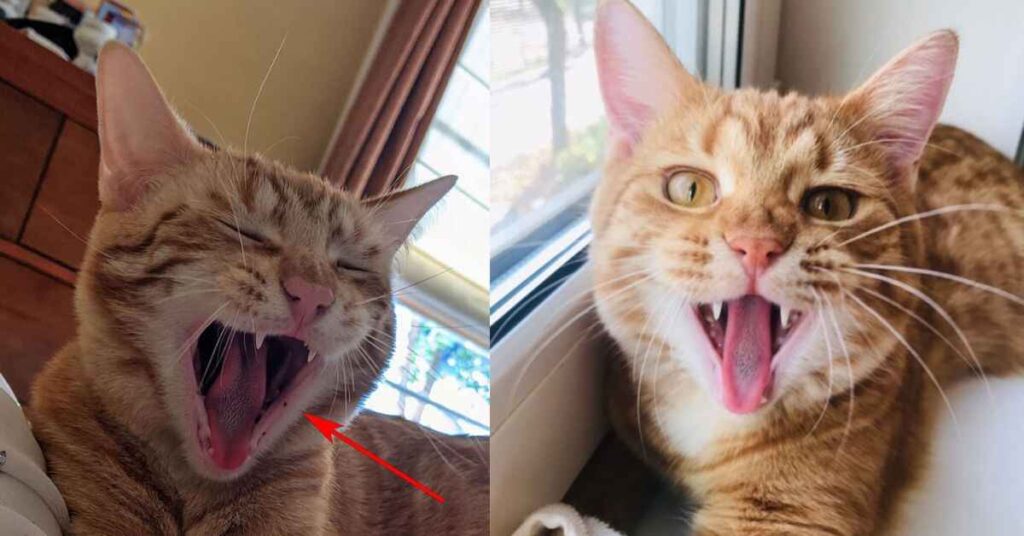
Pedigreed Breeds With Orangey Goodness
While mixed-breed cats can certainly produce gorgeous orange tabbies, there are several pedigreed breeds recognized for their radiant ginger coloring as well, such as:
- Maine Coons: Known for their large size, rugged appearance, and friendly personalities, Maine Coons often showcase stunning orange tabby coats.
- British Shorthairs: These dense, muscular felines can inherit the orange tabby pattern, accentuating their rounded, teddy-bear looks.
- Persians: The lush, long-haired Persian delights with an orange tabby coat, their emerald or copper eyes making a striking contrast.
No matter the breed, breeders typically use the term “red” to describe the vibrant orange hue when it appears.
Legendary Orange Kitties Throughout History
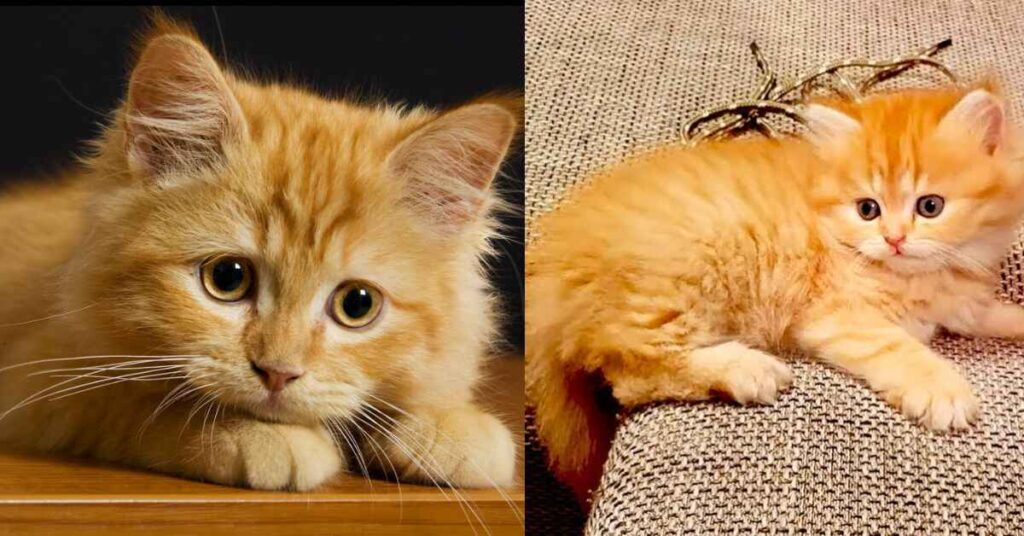
Orange tabbies have captured hearts and gained notable status throughout the centuries! A few of the most famous include:
- Garfield: Arguably the most iconic ginger cat, this lasagna-loving, sarcastic comic strip feline created by Jim Davis is beloved worldwide.
- Crookshanks: From the wizarding world of Harry Potter, this feisty yet loyal cat belonged to the character Hermione Granger.
- Jock: An orange tabby born in November 1962, Jock was gifted to Winston Churchill for his 88th birthday, becoming a cherished pet.
- Dewey Readmore Books: This rescue orange tabby brought warmth to an Illinios library in the 1980s and inspired the bestselling book by Vicki Myron.
The Vikings’ Treasured Mousers
Did you know the Vikings are partly responsible for spreading orange tabbies throughout northern regions?
As Norse explorers traversed the North Atlantic, they strategically brought orange tabby “ship’s cats” along to control rodent pests on board. The cats’ robust presence in areas like Britain can be traced back to the Vikings transporting them for this purpose.
How to Celebrate Ginger Cat Appreciation Day
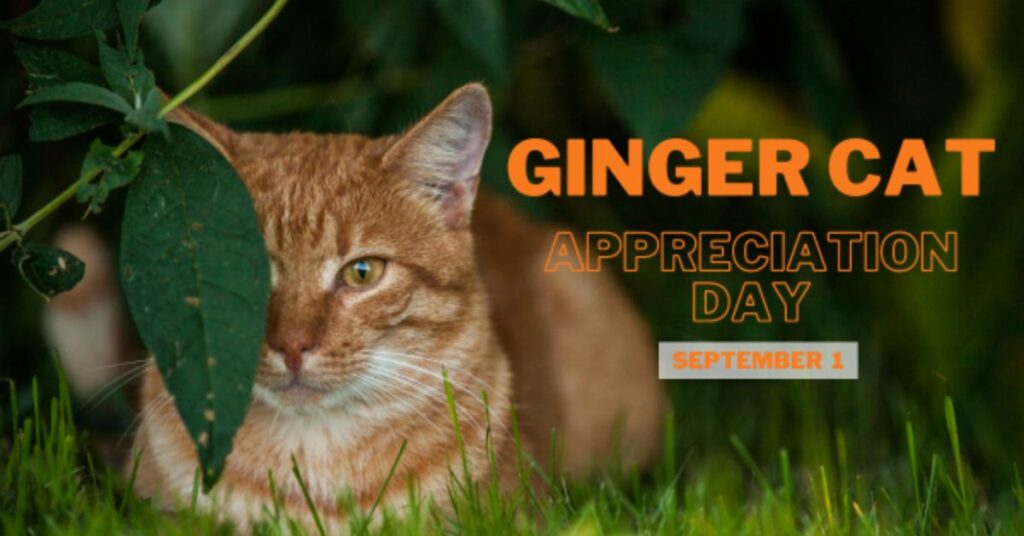
With their brilliant coats and charming personalities, is it any wonder there’s a whole day devoted to celebrating our orange tabby friends? Ginger Cat Appreciation Day takes place annually on September 1st.
Some fun ways to honor the holiday:
- Splurge on new toys or treats for your feline friend
- Snap some cute photos to share on social media
- Donate supplies to an animal shelter in their name
- Simply spend some extra quality time pampering your ginger kitty!
It’s the perfect opportunity to spoil that special marmalade-colored feline in your life. But really, why reserve it just for one day when you can appreciate them year-round?
Read More:
Torbie Cats Explained: The Captivating Mix of Tortoiseshell and Tabby
Bringing It All Together
From their unique genetics governing that brilliant orange color, to their global presence influenced by ancient mariners, to the real and mythical ginger stars of history – orange tabby cats have firmly cemented their place in our hearts and homes.
While coat patterns and fancy breeding certainly enhance their aesthetic appeal, at the end of the day, every orange tabby is an individual with their own quirks and charms to offer. The striking orange fur may first catch our eye, but it’s the endearing personalities lurking beneath those coats that make these felines so beloved.
So whether you’re currently owned by an orange kitty or simply an admirer, we hope exploring these fun facts and examples has given you a new appreciation for these marvelous “marmalade” cats. Share your own experiences in the comments below!
Frequently Asked Questions (FAQ’S)
How do we celebrate National Cat Day?
National Cat Day is celebrated on October 29th by adopting cats from shelters, pampering your pet with treats and toys, and raising awareness about cat welfare and adoption.
What is Ginger Cat Appreciation Day?
Ginger Cat Appreciation Day, celebrated on September 1st, honors orange tabby cats, highlighting their unique traits, history, and the joy they bring to their owners.
What is special about ginger cats?
Ginger cats, also known as orange tabbies, are notable for their distinct reddish or orange coats and friendly personalities, with a higher likelihood of being male due to genetics.
What does a ginger cat symbolize?
Ginger cats often symbolize warmth, friendliness, and good fortune, embodying the affectionate and social nature attributed to these cats.

